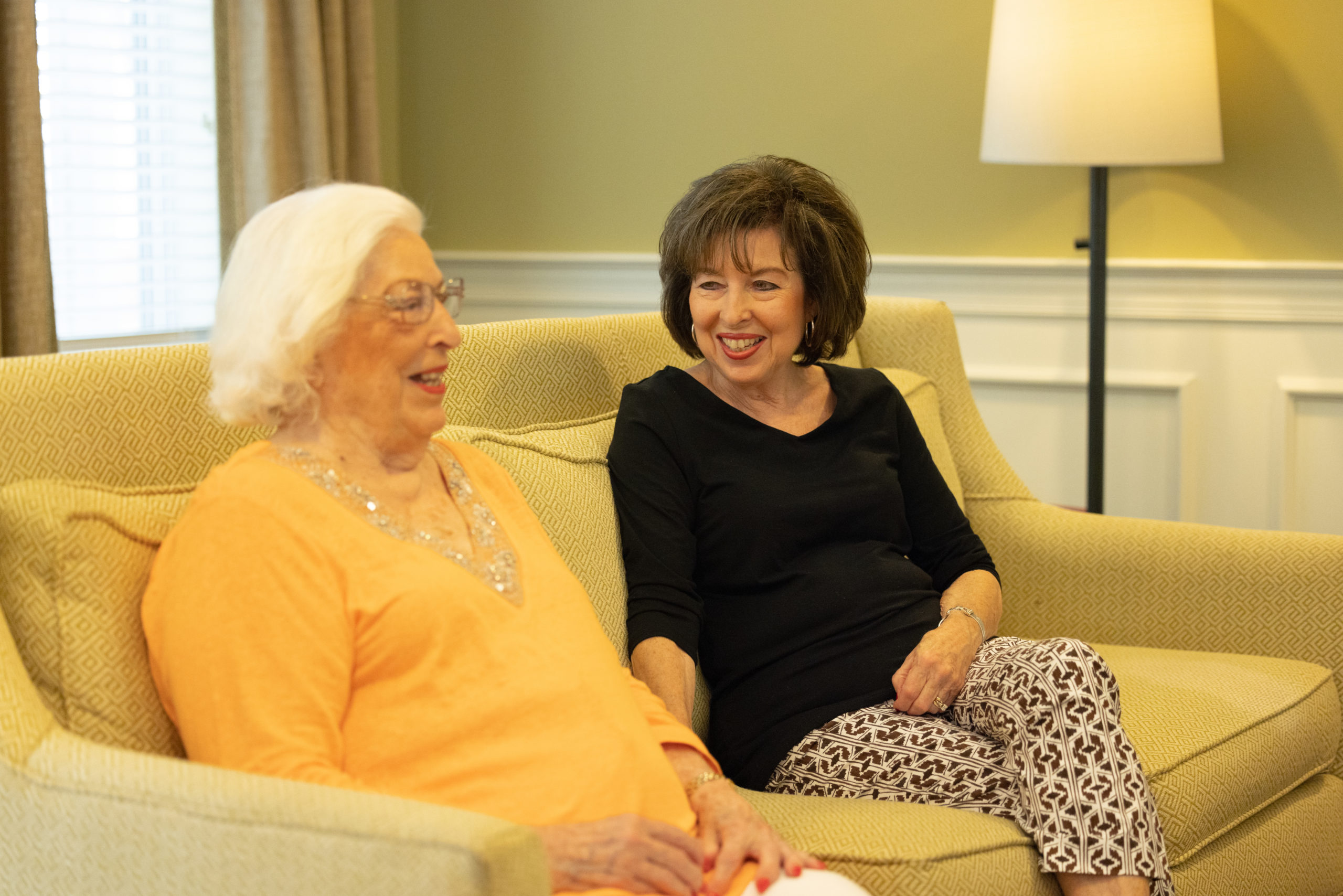Helping a close friend or family member make the move to a senior living community might
initially seem emotionally difficult or daunting; will you see each other less frequently, grow
apart, or even lose touch? No need to fear. Through utilizing modern technologies,
committing some time and effort each week, and keeping an open mind about connecting in
new and novel ways you will be able to preserve and even enhance the relationship you have
with your loved one.
A study by Sara Moorman, PhD. and Jeffrey Stokes found that children who grow up more
emotionally close to their grandparents are less likely to be depressed as adults. For
grandparents, a close relationship with their grandchildren can actually boost brain function,
protect against depression, and increase lifespan. For these reasons and more, prioritizing
regular engagement with your loved one will be health-promoting and beneficial for
everyone involved. Read on to find our favorite ways to stay connected, remain engaged, and
have a little fun with your loved one living in a senior living community.
Harness the power of social media
We are truly living in the era of social media. Many seniors are joining established social
media platforms such as Facebook and Instagram in order to stay engaged with family and
friends and to share what is going on in their world. Encouraging your loved one to join a
social media platform you and your family currently use and enjoy is a fantastic way to share
photos, videos, and text updates from your lives. For example, share photos and videos of
your daughter’s birthday party, your son’s graduation, or Sunday family dinners in real time.
Your loved one might share photos and videos from their life at a senior living community too,
such as the salsa classes they attend, bridge club meetings they love, or of the new friends
they enjoy spending time with. Your loved one might connect with their new friends on social
media to help expand their social circles, and even join groups or follow hashtags (such as
#knittingtutorials or #golftips) that align with their hobbies and interests.
A word of caution: because social media is all about connecting and sharing, make sure your
loved one’s profile is set to private and they know the basics of how to navigate the platform
and share updates safely.
Find some healthy competition
Another creative way to connect with your loved one virtually is to join an online challenge or
play a game together. Try playing chess or a word scramble game online, or join a daily step
count or fitness challenge together. Playing games regularly may help increase memory,
improve mood, and boost mental sharpness, which can be protective against
neurodegenerative conditions and diseases. Connecting over a game or challenge helps
foster closeness with your loved one, even when it isn’t possible to see each other
face-to-face. You might even find a new hobby or game you like in the process, and family
members will enjoy the opportunity to connect through a bit of healthy competition.
Enjoy video chatting
The closest alternative to being together in person is likely video calling through FaceTime,
Zoom, WhatsApp, or other services. The advent of video calling makes it simple, quick, and
easy to connect to your loved one on a regular basis. You might schedule routine catch-ups,
or simply call when you have some free time. You could even consider video calling during
fun family celebrations or events; call grandmother on Zoom to watch her grandson open his
birthday presents, or set the laptop at a place at the table so grandparents can join family
breakfast! Video calling makes it particularly possible for young children to stay connected to
grandparents, as they are able to call often and stay engaged in each other’s lives. When
frequent in-person visits are not possible, utilize video calling to stay connected and close to
your loved one, even from a distance.
Schedule in-person visits
While connecting and sharing virtually has many social and emotional benefits, it is difficult
to top the closeness and emotional connection formed by meeting in person. Though your
family life may be busy, if your loved one is located far away, try to prioritize at least a couple
of visits each year—whether that means they travel to see you or vice versa. If your loved one
is located nearby, scheduling more frequent get-togethers may be more viable (we suggest
weekly, monthly, or even every few months to start). Regular in-person meetings will help you
stay well-connected, engaged, and involved in each other’s lives. Having the structure and
routine of scheduled visits will also help your loved one anticipate and look forward to seeing
you, which gives them something positive to look forward to on a regular basis.
Through dedication, creativity, and utilizing the best of technology, you can maintain—and
perhaps even improve—the connection with your loved one after they make the move to a
senior living community. After making the move, your loved one may have less
responsibilities and more time and energy to invest in a social life and hobbies, which means
more time and mental bandwidth to maintain important relationships as well. Whether you
choose to video chat a few times per week, play a game together, or schedule frequent
in-person visits, the emotional, mental and even physical payoff will be substantial for you,
your loved one, and your family. Senior living communities prioritize an active social life and
foster a caring, supportive atmosphere to help ensure your loved one’s life is rich with positive
social connections whether you are near or far.









